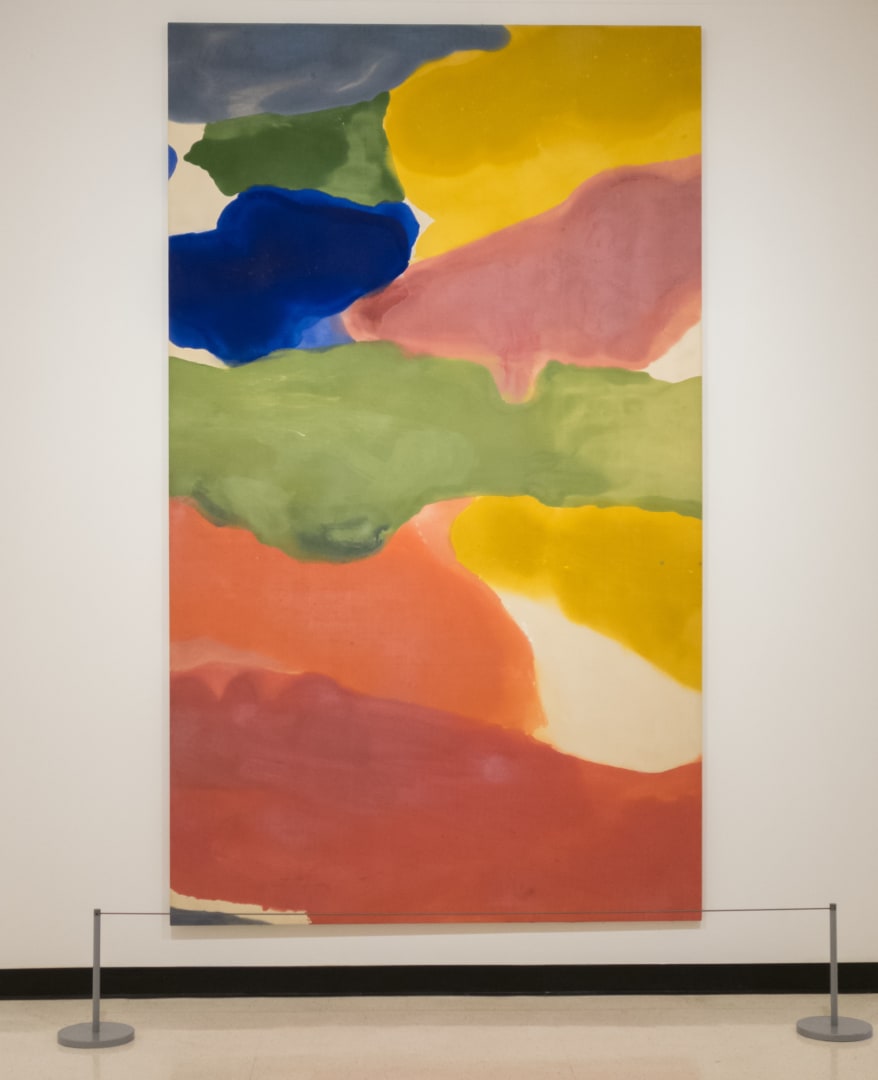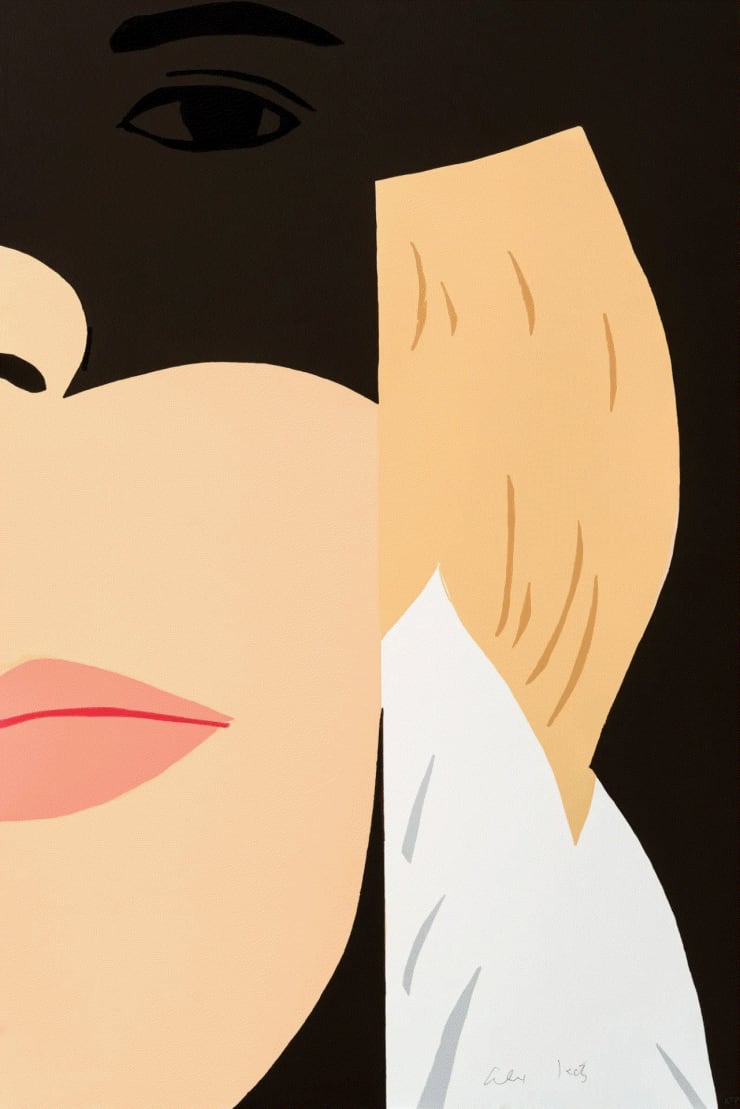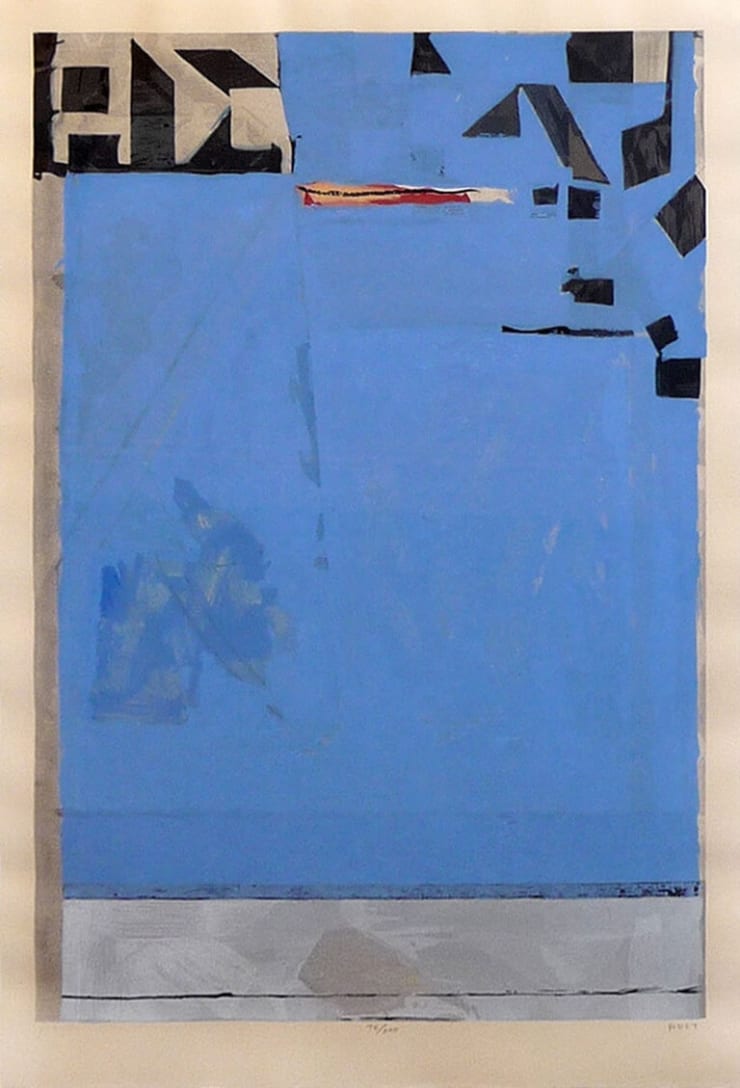Helen Frankenthaler
Helen Frankenthaler
Like other great American artists of the 1950s and ‘60s, Helen Frankenthaler studied the artists that had gone before, examined their techniques, then took all she had learned and went down a path of her own, making interesting twists and turns, during a career that spanned more than six decades. Frankenthaler studied at the Dalton School with the artist/muralist Rufino Tamayo.
“There are no rules. That is how art is born, how breakthroughs happen. Go against the rules or ignore the rules. That is what invention is about.”
—Helen Frankenthaler
Born in 1928, on the Upper East Side of Manhattan, Frankenthaler was the youngest of three daughters. Her mother, Martha, emigrated to the United States with her family, from Germany, when she was an infant. Her father, Alfred Frankenthaler, was a New York State Supreme Court Judge.
Although the family was very well off, Frankenthaler and her sisters were encouraged to study and prepare themselves for careers which would enable them to become responsible and independent.
After graduating from Dalton, Frankenthaler went on to Bennington College, where she studied with Paul Feeley, who, at that time, was Director the Bennington’s art department. Frankenthaler graduated from Bennington in 1949 and returned to New York. She studied, for a year with Hans Hoffman, who as a teacher and a painter, influenced many of the abstract expressionist painters of the time.
Around the same time that she was studying with Hoffman, she met art critic Clement Greenberg. Greenberg took her to see the works of Jackson Pollock. Frankenthaler was so impressed by Pollock’s work, that she began her own work on large canvasses, stretched across the floor of her studio. Unlike Pollock, who dripped paint on his canvasses, Frankenthaler thinned her paint with turpentine and let it soak into the canvas. This technique became known as soak stain.
I painted Mountains and Sea after seeing the cliffs of Nova Scotia. It’s a hilly landscape with wild surf rolling against the rocks. Though it was painted in a windowless loft, the memory of the landscape is in the painting, but it has also equal amounts of Cubism, Pollock, Kandinsky, Gorky.”
Frankenthaler’s paintings began to gain attention at galleries and her most well-known work, Mountains and Sea, had a profound influence on other artists, like Color Field painter, Morris Louis, who said that Frankenthaler was, “a bridge between Jackson Pollock and what was possible.”
“I painted Mountains and Sea after seeing the cliffs of Nova Scotia.” Frankenthaler said, “It’s a hilly landscape with wild surf rolling against the rocks. Though it was painted in a windowless loft, the memory of the landscape is in the painting, but it has also equal amounts of Cubism, Pollock, Kandinsky, Gorky.”
Mountains and Sea, which is on permanent loan at the National Gallery of Art in Washington, is 7’ 2 5/8” x 9’ 9 1/4”. The hues and forms that Frankenthaler was able to achieve with her soak stain technique pushed her, and some of her contemporaries, to experiment with large blocks of color. This led to the recognition of Color Field painting as a recognized style, although artists like Mark Rothko, had been painting in large blocks of color for more than a decade.
In 1956, Frankenthaler was part of a LIFE magazine article titled Women Artists in Ascendance. Also included in the article was Jane Wilson, Joan Mitchell and Grace Hartigan. Frankenthaler often downplayed her being a female painter in the male-dominated New York Art Scene. “I don’t resent being a female painter,” she said, “I don’t exploit it. I paint.”
In 1958, Frankenthaler married Robert Motherwell. Although the couple was divorced in 1971, they had rock star status while they were together and managed, not only to travel and throw parties, but also to create some of their finest work.
Frankenthaler experimented with different techniques and formats throughout her life. She began making prints in 1961, after being invited to work at Universal Limited Art Editions (ULAE) studio in Long Island which, at that time, was just starting up, and hoping to attract young artists who would help them make their mark as a premier print studio.
Her prints and woodcuts have become some of the most sought after and collectible of her work because of the extraordinary technique and style that she brought to the print medium. Frankenthaler posed for a Rolex watch ad in 1990, the same year that a retrospective of her work was on exhibit at MoMA. The ad appeared in Art & Antiques magazine.
She married investment banker Stephen M. DuBrul, Jr. in 1994. The couple had an estate in Darien, Connecticut, where Frankenthaler had a studio and continued to create large, visually stunning works.
Frankenthaler died on December 27, 2011 at age 83. Her husband died one week later.
Frankenthaler’s work can be found in major museums and galleries around the world. She was awarded the National Medal of Arts in 2011, served on the National Council on the Arts of the National Endowment for the Arts from 1985 to 1992 and was a member of the American Academy of Arts and Letters.
“There are no rules.” she said. “That is how art is born, how breakthroughs happen. Go against the rules or ignore the rules. That is what invention is about.”
References:
https://en.wikipedia.org/wiki/Helen_Frankenthaler
https://en.wikipedia.org/wiki/Hans_Hofmann
https://en.wikipedia.org/wiki/Paul_Feeley
https://en.wikipedia.org/wiki/Color_Field
http://arthistory.about.com/od/famous_names/a/Artists-Quotes-Helen-Frankenthaler.htm
http://www.frankenthalerfoundation.org/helen/biography
http://www.courant.com/news/connecticut/hc-who-they-were-top-10-estates-of-connecticut-005-photo.html
-

The Work of Helen Frankenthaler and Sol Lewitt at VFA
February 7, 2024Helen Frankenthaler (1928-2011) became one of the most influential artists of the twentieth century when she expanded the limits of Abstract Expressionism by pouring turpentine-thinned...Read more -

Helen Frankenthaler and Modern and Contemporary Fine Art Print Artists
January 3, 2024One of the pleasures of focusing on fine art prints at VFA, is seeing the looks on people’s faces when they discover the depth, beauty...Read more -

VFA: The Excitement of Art Week 2023
December 6, 2023Miami is an exciting city, but everything gets ramped up and even more exciting during Art Week. The art, fashion, design, even the food, seems...Read more -

VFA at Art Miami 2023
November 29, 2023Vertu Fine Art will be exhibiting the finest Modern and Contemporary art at Art Miami 2023. The 33rd Edition of Art Miami 2023 runs from...Read more -

Recent Acquisitions at VFA
Works by Alex Katz, Helen Frankenthaler, Robert Indiana and Donald Sultan October 4, 2023This has been a banner year for Alex Katz . His retrospective at the Guggenheim was a huge success. Katz had other successful solo shows...Read more -

Yoshitomo Nara and Roy Lichtenstein at Albertina Modern
VFA at Art on Paper September 7, 2023Many people say that these are children but I think these are not children that I paint. Therefore, they are no particular children but for...Read more -

VFA at Art on Paper, September 7-10 at Pier 36
August 31, 2023As the print evolves, it tells you, you tell it. You have a conversation with a print — Helen Frankenthaler, 1988 VFA will be part...Read more -

Honoring the Printmaker
April 5, 2022A current exhibit at the Albuquerque Museum pays tribute to master printers. It is their skills, talents and ability to problem solve that help to...Read more -

Vertu Fine Art at Miami Art Fair 2021
November 22, 2021We are pleased to announce that Vertu Fine Art will be exhibiting at the 31st Edition of Art Miami at the downtown Herald Plaza. The...Read more -

Helen Frankenthaler: An AbEx Heroine
November 7, 2019Helen Frankenthaler was just 23 years old in 1952 when she painted Mountains and Sea. It wasn’t well received when it was first exhibited and...Read more -

Fine Artists and Master Printers
May 17, 2017There are artists whose vision can only be achieved by creating fine art prints. Techniques like oils, acrylics, watercolors or sculpture can not always achieve...Read more -

Frankenthaler, Diebenkorn and Kelly: Prints and Woodcuts for Sale at Vertu
April 22, 2016Among our new acquisitions are works by the great American artists Helen Frankenthaler, Richard Diebenkorn and Ellsworth Kelly. Each of these artists was a masterful...Read more















